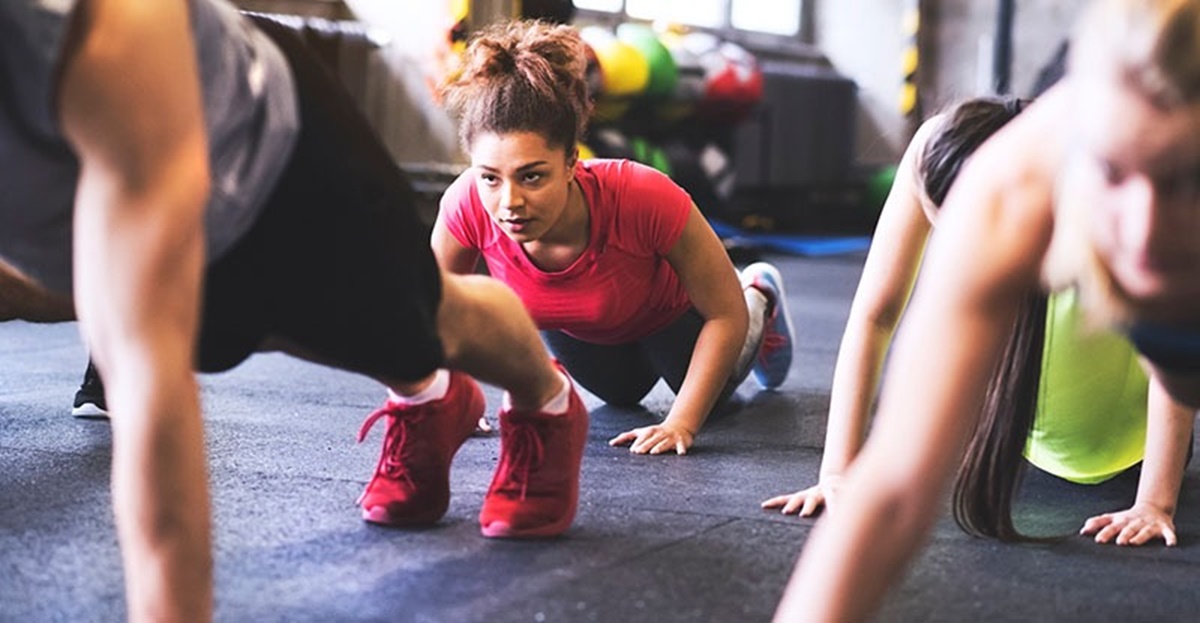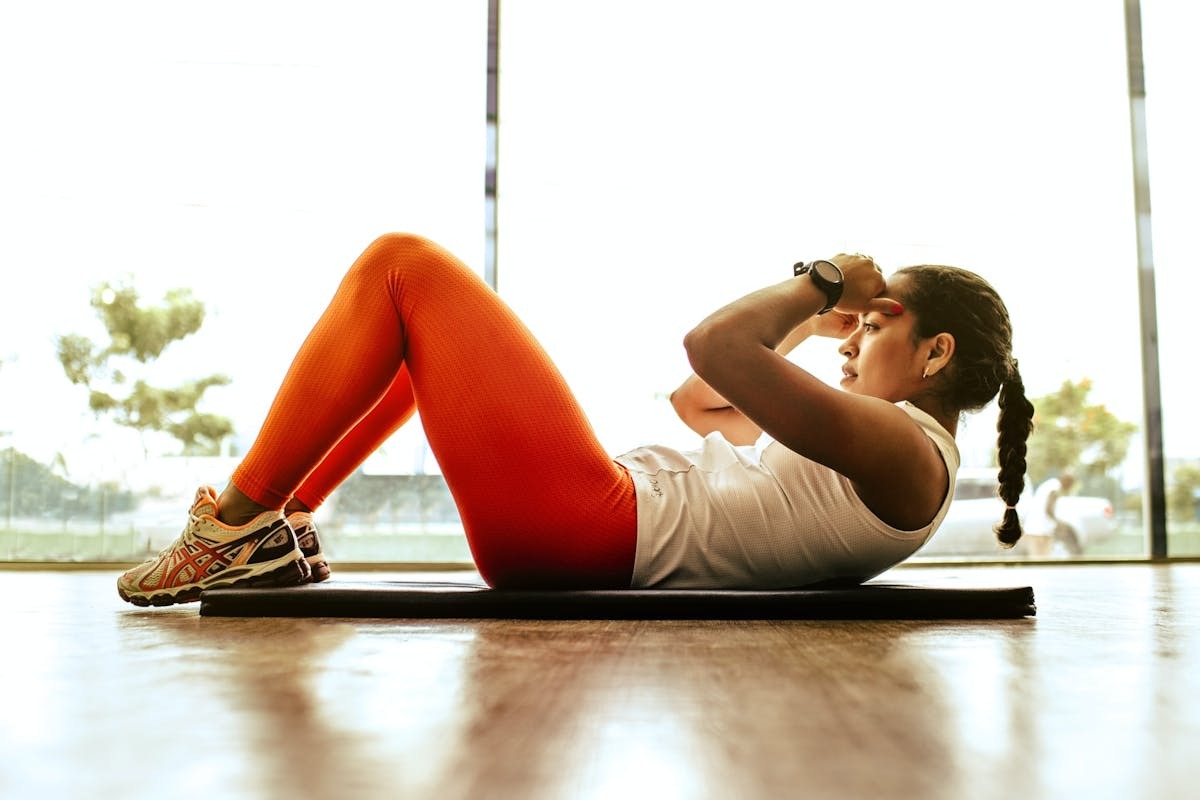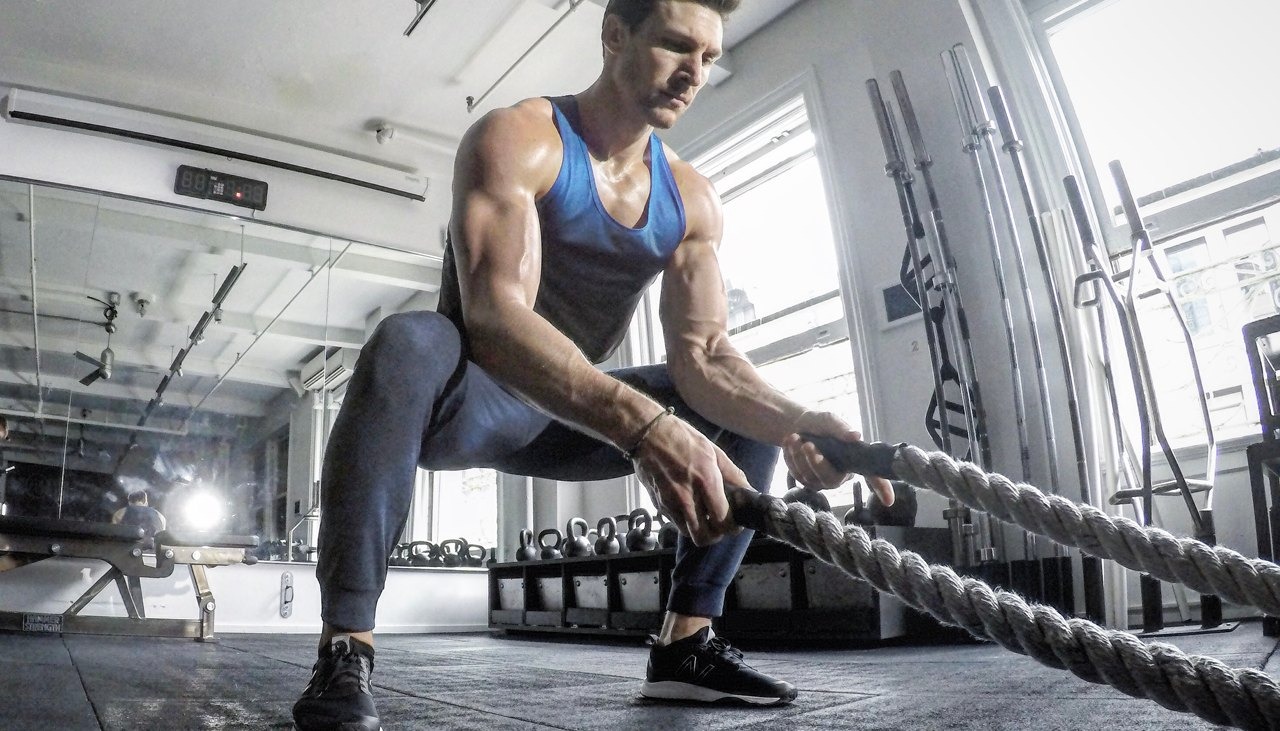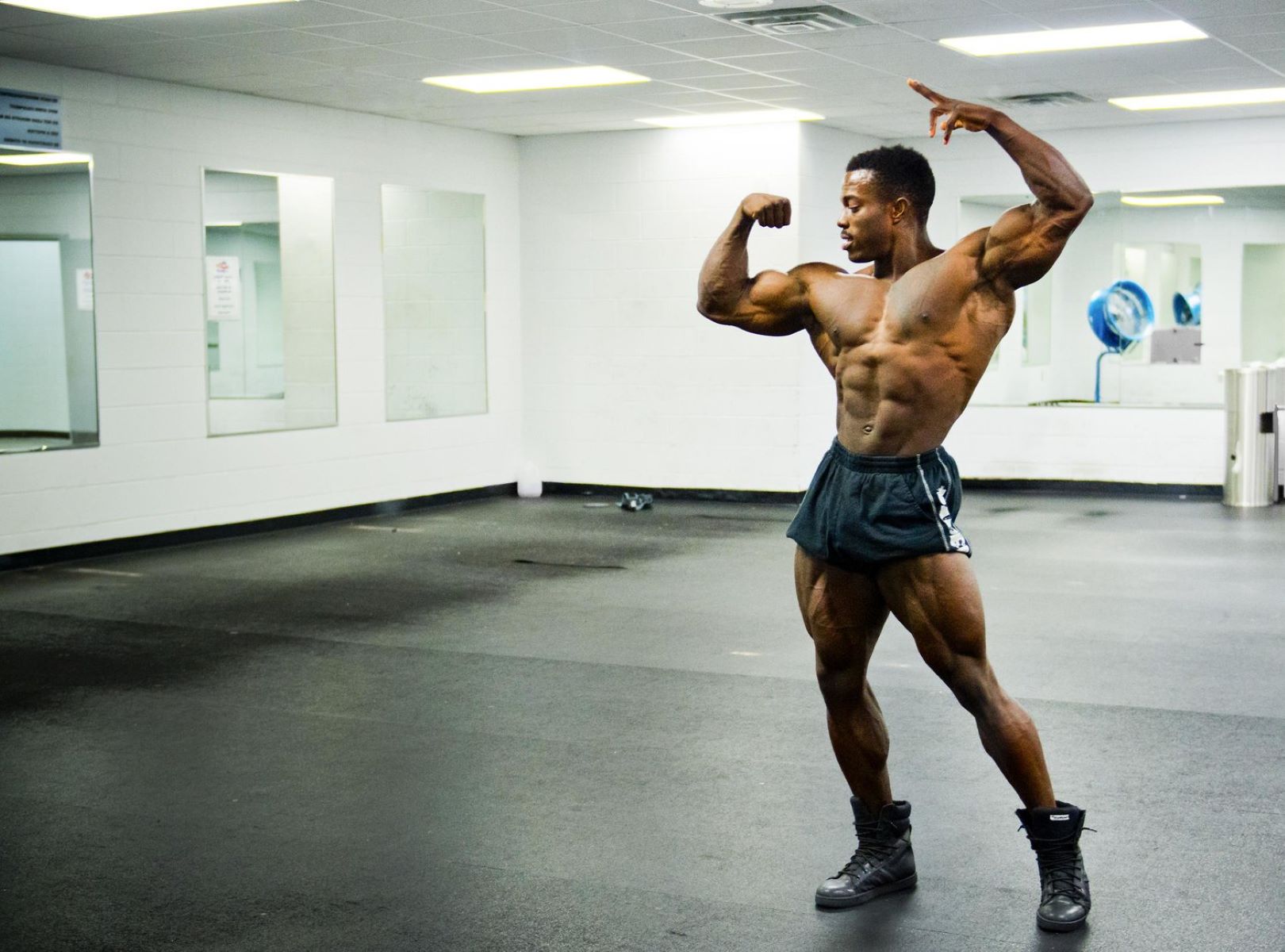Home>Misc>Featured>What Is The Difference Between Physical Activity And Exercise


Featured
What Is The Difference Between Physical Activity And Exercise
Published: September 29, 2023
Discover the Featured article exploring the distinction between Physical Activity and Exercise. Understand the benefits of each and how they contribute to a healthier lifestyle.
Introduction
In today’s society, there is a growing emphasis on leading a healthy and active lifestyle. Two terms that are often used interchangeably but have distinct meanings are “physical activity” and “exercise.” While both involve movement and exertion, there are important differences between the two. Understanding these differences can help individuals tailor their fitness routines and make informed decisions about their overall well-being.
Physical activity refers to any bodily movement that requires energy expenditure. This includes activities such as walking, gardening, dancing, or playing a sport. Physical activity can be performed in various settings, both structured and unstructured, and does not necessarily follow a specific duration or intensity. It encompasses daily activities that involve movement, contributing to the overall energy expenditure.
On the other hand, exercise is a subset of physical activity that is planned, structured, repetitive, and purposeful. It is performed with the intention of improving or maintaining physical fitness. Exercise is typically performed at a higher intensity and for a set duration, with specific goals in mind. It often involves targeted activities such as jogging, weightlifting, swimming, or participating in fitness classes.
While physical activity and exercise are related, they differ in terms of focus, intensity, and purpose. Both forms of movement offer numerous benefits for physical and mental well-being, but understanding their distinctions can help individuals make better choices when designing their fitness routines.
Definition of Physical Activity
Physical activity encompasses any bodily movement that requires energy expenditure. It can be categorized into two types: occupational and leisure-time physical activity.
1. Occupational Physical Activity: This refers to the physical movement involved in one’s occupation or job. It includes activities such as manual labor, working in construction, cleaning, or farming. These activities contribute to the overall energy expenditure and can have a significant impact on an individual’s fitness level and health.
2. Leisure-Time Physical Activity: This refers to activities that individuals engage in during their free time for the purpose of recreation or enjoyment. It includes activities like walking, cycling, gardening, playing sports, or participating in dance classes. Leisure-time physical activity allows individuals to incorporate movement into their daily lives and promotes a healthier lifestyle.
Physical activity is not limited to structured exercise sessions or workouts. It can be accumulated throughout the day by incorporating more movement into daily routines. Taking the stairs instead of the elevator, walking or biking to work, or simply playing with children or pets are all examples of incorporating physical activity into daily life.
The level of intensity of physical activity can range from light to vigorous. Light-intensity activities include leisurely walking, stretching, or performing household chores. Moderate-intensity activities elevate the heart rate and breathing rate, such as brisk walking, cycling, or swimming. Vigorous-intensity activities involve intense effort and significantly increase heart rate and breathing, such as running, aerobic dancing, or playing competitive sports.
Regular physical activity is essential for maintaining overall health and well-being. It has numerous benefits, including:
- Improving cardiovascular health and reducing the risk of heart disease.
- Strengthening muscles and bones.
- Enhancing flexibility and joint mobility.
- Helping to achieve and maintain a healthy body weight.
- Boosting mood and reducing stress and anxiety.
Incorporating physical activity into daily life is an important step towards leading a healthier and more active lifestyle. Whether through occupational physical activity or leisure-time activities, finding enjoyable ways to move the body can have profound effects on both physical and mental well-being.
Definition of Exercise
Exercise is a subset of physical activity that is planned, structured, repetitive, and purposeful. Unlike general physical activity, exercise is performed with the specific goal of improving or maintaining physical fitness.
There are various components that define exercise:
- Planning: Exercise is a deliberate and intentional activity. It involves setting specific goals and designing a workout regimen to achieve those goals.
- Structure: Exercise follows a structured pattern or routine. It includes specific exercises, repetitions, sets, and rest periods, all aimed at targeting different muscle groups and achieving desired outcomes.
- Repetitiveness: Exercise involves performing movements or activities repeatedly. This repetition helps build strength, endurance, and improve overall fitness levels.
- Purposefulness: Unlike general physical activity, exercise has a specific purpose. It may focus on improving cardiovascular health, building muscle strength, increasing flexibility, or achieving weight loss goals.
Exercise can encompass a wide range of activities and modalities, including:
- Aerobic Exercise: This type of exercise targets the cardiovascular system, increasing heart rate and breathing. Examples include running, cycling, swimming, and aerobic workouts.
- Strength Training: Also known as resistance training, this type of exercise aims to build and strengthen muscles. It often involves weightlifting, using resistance bands, or bodyweight exercises.
- Flexibility Training: These exercises focus on improving the range of motion and flexibility, such as stretching, yoga, and Pilates.
- Interval Training: Interval training involves alternating between periods of high-intensity exercise and periods of rest or lower intensity. It is effective for improving cardiovascular fitness and burning calories.
The intensity, duration, and frequency of exercise can vary based on individual goals, fitness levels, and preferences. It is important to gradually increase the intensity and duration of exercise to avoid injury and allow the body to adapt.
Regular exercise provides a multitude of benefits, including:
- Improved cardiovascular health and reduced risk of chronic diseases.
- Increased muscular strength and endurance.
- Enhanced flexibility and mobility.
- Weight management and body composition improvements.
- Stress reduction and improved mental well-being.
By engaging in regular exercise, individuals can improve their overall fitness levels, prevent chronic diseases, and enhance their quality of life.
Similarities between Physical Activity and Exercise
While physical activity and exercise have distinct definitions, there are important similarities between the two:
1. Movement and Energy Expenditure: Both physical activity and exercise involve bodily movement and require energy expenditure. Whether it is going for a brisk walk or participating in a dance class, both forms of activity contribute to burning calories and improving overall fitness.
2. Health Benefits: Engaging in both physical activity and exercise provides numerous health benefits. Regular participation in either form of activity can help improve cardiovascular health, strengthen muscles and bones, enhance flexibility, and reduce the risk of chronic diseases. Both also offer mental health benefits by reducing stress, improving mood, and enhancing overall well-being.
3. Customization and Adaptability: Both physical activity and exercise can be customized to individual preferences and fitness levels. Whether it is choosing a favorite sport or exercise routine, individuals have the flexibility to select activities that they enjoy and that align with their fitness goals. Additionally, both physical activity and exercise can be adapted based on one’s current fitness level, allowing for progression and continuous improvement over time.
4. Social Engagement: Both physical activity and exercise can be done individually or in a social setting. Joining a sports team, participating in group fitness classes, or exercising with friends or family members can foster social connections and provide a sense of community and support. Social engagement can also enhance motivation and enjoyment, making it more likely for individuals to maintain an active lifestyle.
5. Positive Impact on Overall Well-being: Both physical activity and exercise contribute to improved overall well-being. Engaging in regular physical activity or exercise can boost self-esteem, promote better sleep patterns, increase energy levels, and improve cognitive function. The positive effects on physical, mental, and emotional health have a significant impact on an individual’s quality of life.
While there are similarities between physical activity and exercise, it is important to understand their differences and how they can be incorporated into a well-rounded fitness routine. By combining both physical activity and structured exercise, individuals can enjoy a range of movement and reap the multiple benefits that each form of activity offers.
Differences between Physical Activity and Exercise
While physical activity and exercise are often used interchangeably, there are key differences between the two:
1. Purpose: The primary difference between physical activity and exercise lies in their purpose. Physical activity encompasses any type of movement that requires energy expenditure, whereas exercise specifically refers to planned, structured, and repetitive activities performed with the intention of improving or maintaining physical fitness.
2. Intensity: Physical activity can be of varying intensity, ranging from light to vigorous, depending on the activity performed. Exercise, however, tends to be more structured and often involves higher levels of intensity to target specific fitness goals. It typically requires a higher exertion level and a focus on challenging the body to achieve desired outcomes.
3. Planning and Structure: Physical activity does not require specific planning or structure. It can be incorporated into daily routines and encompasses a wide range of activities. Exercise, on the other hand, is carefully planned and structured, with specific goals in mind. It involves following a routine or program that incorporates specific exercises, repetitions, sets, and rest periods to achieve desired fitness outcomes.
4. Repetitiveness: Physical activity can be both repetitive and non-repetitive, depending on the activities performed. It includes a wide range of activities that can vary in movement patterns. Exercise, however, typically involves repetitive movements to build strength, endurance, or flexibility. The repetition helps the body adapt to the demands of the exercise and allows for progressive improvement over time.
5. Focus on Physical Fitness: While physical activity offers numerous health benefits, exercise specifically aims to improve or maintain physical fitness. Exercise targets specific components of fitness, such as cardiovascular endurance, muscular strength, flexibility, or body composition. It is designed to promote physiological adaptations that lead to improved overall fitness levels.
6. Duration and Frequency: Physical activity can be accumulated throughout the day and does not necessarily have a specific duration or frequency. It can involve short bouts of activity, such as taking the stairs or walking to the bus stop. Exercise, on the other hand, typically follows a set duration and frequency to ensure that the body is adequately challenged and given sufficient time to recover and adapt.
Understanding the differences between physical activity and exercise allows individuals to make informed decisions about how they incorporate movement into their lives. Both physical activity and exercise have their own benefits and play important roles in maintaining a healthy and active lifestyle. Combining a variety of physical activities and incorporating structured exercise can lead to a well-rounded fitness routine that supports overall well-being.
Benefits of Physical Activity
Physical activity offers a multitude of benefits for both physical and mental well-being. Incorporating regular physical activity into daily life can have a positive impact on overall health and enhance quality of life. Here are some key benefits of engaging in physical activity:
1. Improved Cardiovascular Health: Regular physical activity helps strengthen the heart, improves blood circulation, and lowers the risk of cardiovascular diseases. It can reduce the risk of conditions such as heart disease, high blood pressure, and stroke. Engaging in aerobic activities like brisk walking, cycling, or swimming can help improve cardiovascular fitness and overall heart health.
2. Increased Muscular Strength and Endurance: Physical activity helps build and strengthen muscles, contributing to improved muscular strength and endurance. Activities like weightlifting, resistance training, and bodyweight exercises help increase muscle mass, improve bone density, and enhance overall physical performance.
3. Enhanced Flexibility and Joint Mobility: Engaging in regular physical activity, including stretching exercises and activities like yoga or Pilates, helps improve flexibility and joint range of motion. Increased flexibility can enhance athletic performance, reduce the risk of injuries, and improve posture and balance.
4. Weight Management: Physical activity plays a crucial role in weight management. It helps burn calories and maintain a healthy body weight. Engaging in activities that elevate heart rate and increase energy expenditure, such as brisk walking or participating in sports, can aid in weight loss and weight maintenance.
5. Mental Well-being: Physical activity has a positive impact on mental health and well-being. It reduces symptoms of depression, anxiety, and stress by stimulating the release of endorphins, the “feel-good” hormones, in the brain. Physical activity also improves sleep patterns, boost self-confidence, and enhances overall mood and cognitive function.
6. Disease Prevention: Regular physical activity helps reduce the risk of chronic diseases, including type 2 diabetes, certain types of cancer, and osteoporosis. It also plays a role in managing and preventing conditions like hypertension, metabolic syndrome, and obesity.
7. Improved Longevity: Engaging in regular physical activity is associated with increased life expectancy. It helps maintain overall health and reduces the risk of premature death from various causes, including cardiovascular diseases and certain types of cancer.
To reap the benefits of physical activity, it is recommended to aim for at least 150 minutes of moderate-intensity aerobic activity or 75 minutes of vigorous-intensity aerobic activity every week, along with muscle-strengthening activities twice a week. Incorporating physical activity into daily routines, such as taking the stairs, walking or biking to work, or participating in sports or recreational activities, can significantly contribute to an active and healthy lifestyle.
Benefits of Exercise
Exercise offers a wide range of physical and mental benefits, making it an essential component of a healthy lifestyle. Whether it’s aerobic exercise, strength training, or flexibility exercises, engaging in regular exercise provides numerous advantages. Here are some key benefits of incorporating exercise into your routine:
1. Improved Cardiovascular Fitness: Regular exercise strengthens the heart and lungs, improving cardiovascular fitness. It increases the ability of the cardiovascular system to deliver oxygen and nutrients to the muscles, reducing the risk of cardiovascular diseases such as heart disease, stroke, and high blood pressure.
2. Increased Muscle Strength and Endurance: Exercise, particularly strength training, helps build and strengthen muscles. It improves muscle strength, endurance, and overall functional capability. Engaging in resistance exercises challenges the muscles, increasing muscle mass and promoting better muscle function.
3. Enhanced Flexibility and Mobility: Flexibility exercises, such as stretching and yoga, improve joint range of motion, muscle flexibility, and overall flexibility. Enhanced flexibility reduces the risk of injuries, increases joint mobility, and enhances athletic performance.
4. Weight Management and Body Composition: Exercise plays a critical role in weight management and body composition. Regular exercise helps burn calories, maintain a healthy weight, and reduce body fat. It also promotes lean muscle development, which increases metabolism and supports long-term weight management.
5. Improved Mental Well-being: Exercise has significant positive effects on mental health. It reduces symptoms of depression, anxiety, and stress, improving overall mental well-being. Exercise stimulates the release of endorphins, known as “feel-good” hormones, which enhance mood and promote a sense of happiness and relaxation.
6. Boosted Cognitive Function: Regular exercise has been shown to improve cognitive function, memory, and focus. It enhances blood flow and oxygen delivery to the brain, promoting neuroplasticity and improving cognitive performance. Exercise has also been linked to a reduced risk of cognitive decline and age-related neurodegenerative diseases.
7. Reduced Risk of Chronic Diseases: Exercise plays a crucial role in reducing the risk of chronic diseases such as type 2 diabetes, certain types of cancer, and osteoporosis. It helps control blood sugar levels, improves insulin sensitivity, boosts immune function, and promotes bone health.
8. Increased Energy Levels: Engaging in regular exercise boosts energy levels and reduces feelings of fatigue. Exercise improves cardiovascular efficiency, enhances oxygen transport, and improves overall metabolic function, resulting in increased energy levels throughout the day.
9. Better Sleep Quality: Regular exercise promotes better sleep quality and duration. Physical activity helps regulate sleep patterns, reduces insomnia, and improves overall sleep quality. It also reduces stress and anxiety, which can contribute to better sleep.
10. Enhanced Longevity: Individuals who engage in regular exercise tend to live longer and have a lower risk of premature death. Exercise, combined with a healthy lifestyle, reduces the risk of mortality from various causes, including cardiovascular diseases and certain types of cancer.
It is important to remember that consistency is key to reaping the benefits of exercise. Aim for at least 150 minutes of moderate-intensity aerobic activity or 75 minutes of vigorous-intensity aerobic activity per week, combined with strength training exercises at least twice a week. Consulting with a healthcare professional or fitness expert can provide personalized guidance and recommendations based on individual needs and goals.
Recommendations for Physical Activity
Regular physical activity is vital for maintaining optimal health and well-being. Incorporating physical activity into your daily routine can be enjoyable and rewarding. Here are some recommendations to help you engage in regular physical activity:
1. Set Realistic Goals: Start by setting realistic and achievable goals. Consider your current fitness level, preferences, and schedule. Whether it’s aiming for a certain number of steps per day or participating in specific activities, having goals can provide motivation and a sense of accomplishment.
2. Find Activities You Enjoy: Choose physical activities that you enjoy and that fit your interests. Engaging in activities you find enjoyable increases the likelihood of sticking with them in the long term. Whether it’s dancing, cycling, playing a sport, or gardening, find activities that make you happy and keep you motivated.
3. Mix Up Your Activities: Varying your activities can prevent boredom and keep you engaged. Incorporate a combination of aerobic activities, strength training, and flexibility exercises to achieve a well-rounded fitness routine. Mixing up activities not only challenges different muscle groups but also provides a variety of physical and mental benefits.
4. Start Slowly and Gradually Increase Intensity: If you’re new to physical activity or have been inactive for a while, start gradually and increase intensity over time. Begin with light-intensity activities like walking, and gradually increase the duration and intensity as your fitness level improves. This approach reduces the risk of injury and allows your body to adapt to increased demands.
5. Make Physical Activity a Priority: Schedule dedicated time for physical activity in your daily routine. Treat it as an important commitment to yourself. Block out time on your calendar or set reminders to help prioritize and maintain consistency. Remember, even short bouts of activity throughout the day can add up and contribute to overall health benefits.
6. Incorporate Physical Activity into Daily Life: Look for opportunities to incorporate physical activity into your daily activities. Take the stairs instead of the elevator, walk or bike to nearby destinations, or engage in active household chores. Small changes can make a big difference in increasing overall physical activity levels.
7. Stay Hydrated: Drink plenty of water before, during, and after physical activity to stay hydrated. Proper hydration is essential for maintaining optimal performance and preventing dehydration.
8. Listen to Your Body: Pay attention to your body’s signals and adjust your activities accordingly. If you feel pain or discomfort during an activity, take a break, modify the exercise, or consult with a healthcare professional if needed. It’s important to prioritize your safety and well-being.
9. Seek Social Support: Engage in physical activity with friends, family, or join group fitness classes. Having a support system can help keep you motivated and accountable. Working out with others can also make physical activity more enjoyable and provide a sense of camaraderie.
10. Consult with a Healthcare Professional: If you have any health concerns or underlying medical conditions, it’s advisable to consult with a healthcare professional before starting a new exercise program. They can provide personalized recommendations and guidance based on your specific needs and limitations.
Remember, the key is to make physical activity a regular part of your life. Find activities you enjoy, set goals, and be consistent. By engaging in regular physical activity, you’ll enhance your overall health and well-being in a fun and sustainable way.
Recommendations for Exercise
Exercise is a crucial component of a well-rounded fitness routine. Whether you’re a beginner or have been exercising for a while, here are some recommendations to help you maximize the benefits of your exercise regimen:
1. Set Specific Goals: Determine what you want to achieve through exercise, whether it’s improving cardiovascular fitness, building strength and muscle, increasing flexibility, or achieving weight loss goals. Setting specific and measurable goals will help you stay motivated and track your progress.
2. Choose Activities You Enjoy: Select exercises and activities that you enjoy. Find activities that align with your interests and preferences, whether it’s running, cycling, swimming, attending fitness classes, or engaging in team sports. Enjoying the activities you do makes it easier to stick with your exercise routine.
3. Focus on Proper Form and Technique: Pay attention to proper form and technique while performing exercises. Correct form ensures maximum effectiveness and reduces the risk of injury. If you’re unsure, consider working with a certified fitness professional who can provide guidance on proper technique.
4. Incorporate Variety: Include a variety of exercises in your routine to target different muscle groups and prevent boredom. Incorporate aerobic exercises like jogging or cycling, strength training exercises using weights or resistance bands, and flexibility exercises such as stretching or yoga. Mixing up your routine helps keep you engaged and challenges your body in different ways.
5. Gradually Increase Intensity and Progression: Gradually increase the intensity of your workouts as your fitness level improves. Increase the weight, repetitions, or duration of your exercises to ensure ongoing progression and continual improvement. However, be cautious not to push yourself too hard too quickly, as it may lead to injury.
6. Warm-up and Cool Down: Always include a proper warm-up and cool-down in your exercise routine. A warm-up prepares your body for the upcoming workout by increasing blood flow and warming up the muscles. Similarly, a cool-down helps your body slowly return to a resting state and aids in recovery.
7. Allow for Rest and Recovery: Schedule rest days in your exercise routine to allow your body to recover and repair. Adequate rest is crucial for muscle growth, injury prevention, and overall performance. Listen to your body and take breaks when needed to avoid overtraining.
8. Monitor and Track Progress: Keep track of your exercise sessions and progress over time. This can be done through a workout journal, a fitness app, or using fitness trackers. Tracking your progress provides motivation and accountability, helping you see how far you’ve come and identifying areas for improvement.
9. Stay Hydrated and Fuel Properly: Hydrate yourself before, during, and after exercise to prevent dehydration. Ensure you’re properly fueled by consuming a balanced diet that includes carbohydrates, proteins, and healthy fats. Optimal nutrition supports exercise performance and recovery.
10. Listen to Your Body and Seek Professional Guidance: Pay attention to your body’s signals and adjust your exercise routine accordingly. If you experience pain or discomfort, seek guidance from a certified fitness professional or healthcare provider. They can provide modifications or alternative exercises to accommodate any limitations or address specific needs.
Remember, consistency and commitment are key for seeing results from your exercise routine. By following these recommendations and making exercise a regular part of your life, you’ll be on your way to achieving your fitness goals and enjoying the numerous benefits that exercise has to offer.
Conclusion
Physical activity and exercise are essential for maintaining a healthy and active lifestyle. While physical activity refers to any bodily movement that requires energy expenditure, exercise is a more structured and purposeful form of physical activity, aimed at improving or maintaining physical fitness.
Physical activity and exercise share commonalities, such as promoting cardiovascular health, increasing strength and flexibility, enhancing mental well-being, and reducing the risk of chronic diseases. Both forms of movement provide numerous benefits for our physical and mental well-being.
However, there are distinct differences between physical activity and exercise. Physical activity can be spontaneous and varied, while exercise follows a planned and structured routine with specific fitness goals in mind.
To reap the benefits of both physical activity and exercise, it is recommended to incorporate a combination of activities into your routine. Engaging in regular physical activity, such as walking, gardening, or playing a sport, can contribute to overall energy expenditure and promote a healthier lifestyle. Meanwhile, adding structured exercise sessions, such as aerobic workouts, strength training, or flexibility exercises, allows for targeted and intentional improvements in physical fitness.
Remember to set realistic goals, choose activities you enjoy, and prioritize consistency. Listen to your body, stay hydrated, and ensure proper nutrition to support exercise performance and recovery. It is also advisable to consult with a healthcare professional or fitness expert, especially if you have any underlying health concerns or specific needs.
By integrating physical activity and exercise into your daily life, you can enhance your cardiovascular fitness, strengthen muscles, increase flexibility, manage weight, improve mental well-being, and reduce the risk of chronic diseases. Find activities that bring you joy, challenge yourself appropriately, and make movement a lifelong commitment.
Embracing a well-rounded approach to physical activity and exercise will not only benefit your body but also enhance your overall quality of life. Take that first step today towards a healthier, happier, and more active you.









